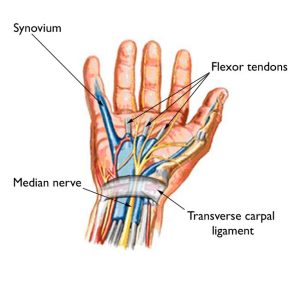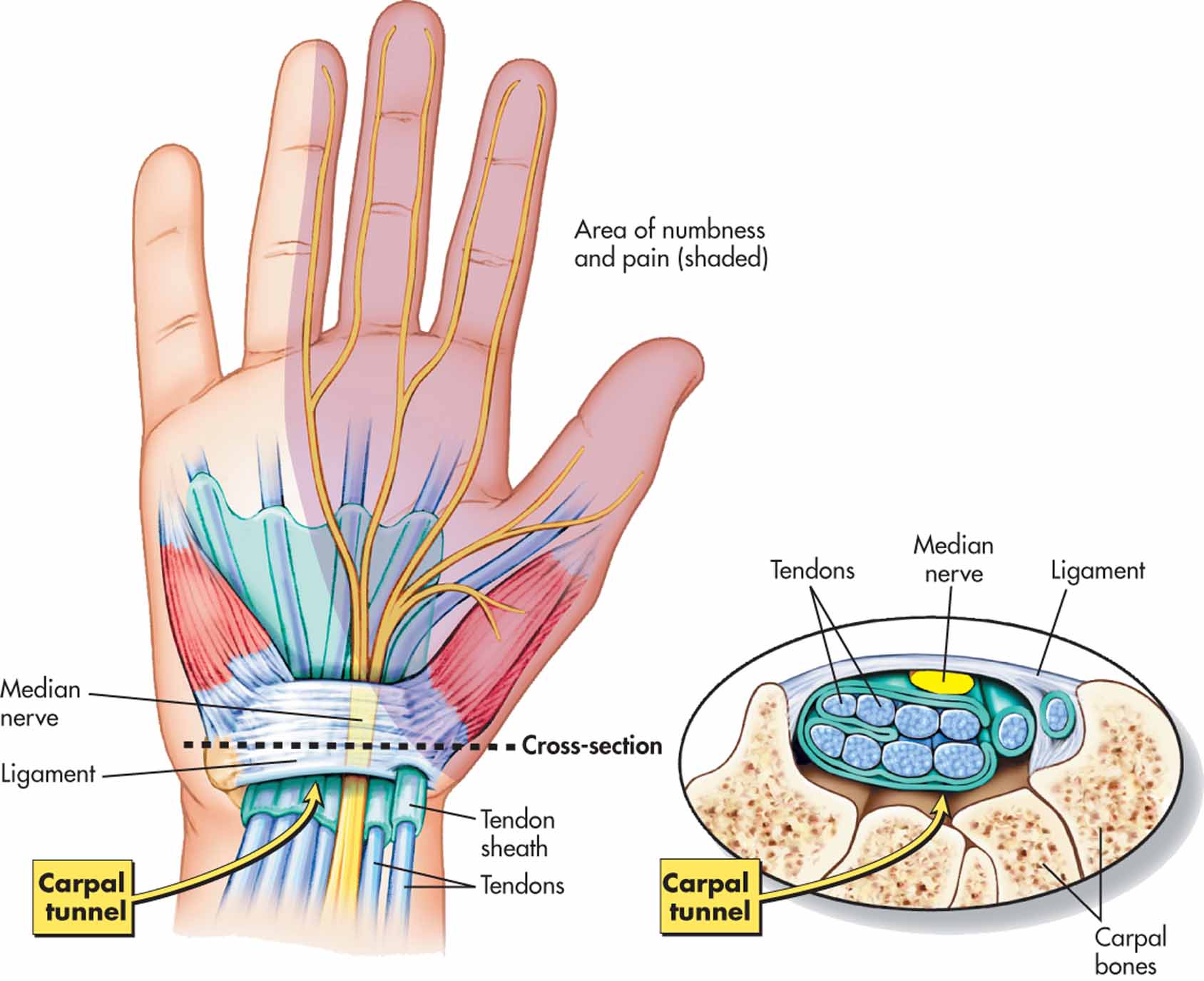May 9, 2024
What is Carpal tunnel syndrome?
In most patients, carpal tunnel syndrome gets worsen over a period of time. If untreated for too long, it can lead to permanent dysfunction of the hand, including loss of sensation in the fingers and weakness. For this reason, it is important to diagnose and treat carpal tunnel syndrome promptly.
The carpal tunnel contains the median nerve and flexor tendons that bend the fingers and thumb.
Carpal tunnel syndrome is caused by pressure on the median nerve as it travels through the carpal tunnel.

Symptoms
Symptoms of carpal tunnel syndrome may include:
- Numbness, tingling, burning, and pain — primarily in the thumb and index, middle, and ring fingers. This often wakes up people at night.
- Occasional shock-like sensations that radiate to the thumb, index, middle, and ring finger.
- Pain or tingling that might travel up to the forearm towards the shoulder.
- Weakness and clumsy hand — this might makes it difficult to perform fine movements such as buttoning of clothes etc.
- Dropping things — due to the weakness, numbness, or a loss of proprioception.
In most of the cases, the symptoms of carpal tunnel syndrome begin gradually, without a specific injury. Many patients find that their symptoms come and go at first. However, as the condition worsens, symptoms may occur more frequently or may persist for longer period of time.
Night time symptoms are very common. Because many people sleep by keeping their wrists bent, symptoms may awaken you from sleep. During the day, symptoms often occur while holding something for a prolonged period of time with the wrist bent forward or backward, such as while using a phone, or while driving, or while reading a book.
Many patients find that, moving or shaking their hands help relieve their symptoms.
Treatment
Although it is a gradual process, for most people carpal tunnel syndrome will worsen over time without some form of treatment. For this reason, it is important to be evaluated and diagnosed by a doctor early. In the early stages, it may be possible to slow or stop the progression of the disease.
Nonsurgical Treatment
If diagnosed and treated early, the symptoms of carpal tunnel syndrome can often be relieved without surgery. If diagnosis is uncertain or if symptoms are mild, the doctor will recommend nonsurgical treatment at first.
Wearing a splint or brace reduces pressure on the median nerve by keeping wrist straight.
Nonsteroidal anti-inflammatory drugs (NSAIDs). Anti-inflammatory medications such as Diclofenac, ibuprofen and naproxen can help relieve pain and inflammation.
Nonsurgical treatment may include:
Bracing or splinting. Wearing a brace or splint at night will keep you from bending wrist when you are at sleep. Keeping wrist in a straight or neutral position reduces pressure on the nerve in the carpal tunnel. It may also help to wear a splint during the day while doing activities that aggravate symptoms.
Activity changes. Symptoms often occur when hand and wrist are in the same position for too long — particularly when wrist is flexed or extended.
Nerve gliding exercises. Some patients may benefit from their exercises that might help the median nerve to move more freely within the confines of the carpal tunnel. Specific exercises may be recommended by the doctor or by the therapist.
Steroid injections. Corticosteroid, or cortisone, is a powerful anti-inflammatory agent that can be injected into the carpal tunnel. These injections often relieve painful symptoms or help to calm a flare-up of symptoms.
In patients with mild, early disease, injections may relieve symptoms in the long-term.
In those with moderate to severe disease, the positive effects of the injection may be temporary.
A cortisone injection may also be used by the doctor to help diagnose carpal tunnel syndrome.
Surgical Treatment
If nonsurgical treatment does not relieve symptoms or provides only temporary relief, the doctor may recommend surgery.
How can ORONAC GEL help to get rid of shoulder pain?
ORONAC GEL contains Diclofenac, the No. 1 doctor recommended active ingredient for acute pain relief. It helps you to get rid of pain quickly.
The other ingredients of ORONAC GEL such as LINSEED OIL, METHYL SALICYLATE, MENTHOL AND CAPSAICIN together, at pinch use, gentle rub ensures quick relief from pain.


